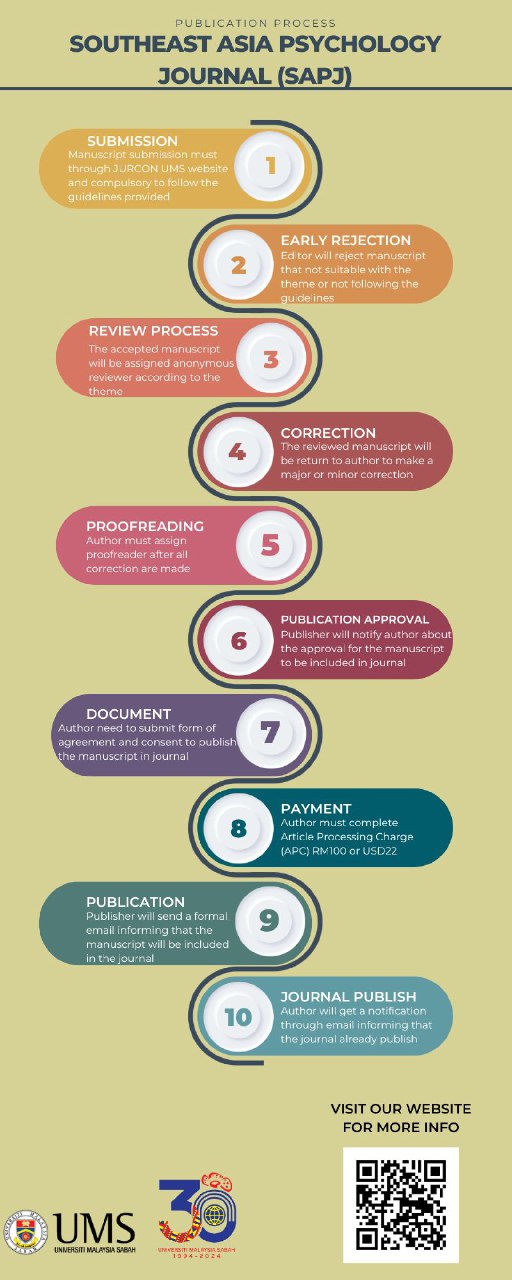SMARTPHONE USAGE, SMARTPHONE ADDICTION, INTERNET ADDICTION AND NOMOPHOBIA IN UNIVERSITY MALAYSIA SABAH (UMS)
DOI:
https://doi.org/10.51200/sapj.v7i1.5161Keywords:
Smartphone Usage, Smartphone Addiction, Internet Addiction, Nomophobia & Young AdultsAbstract
The aim of this study is to identify the relationships among the factors, which are smartphone usage, smartphone addiction, internet addiction and Nomophobia to the extend where how much and how each factor affects each other. The 98 respondents are from the whole UMS, Sabah campus, and are from various and different faculties and ethnic backgrounds. The smartphone usage was measured by the Smartphone Usage questionnaire which already exists and the smartphone addiction level was measured through a questionnaire from Smartphone Addiction Scale – Short Version (SAS – SV). The internet addiction level was measured through the Korean Short Version Internet Addiction Scale (KS – Scale), and lastly, the level of Nomophobia was measured through the Nomophobia Questionnaire (NMP-Q). The data were collected through Google Form and analyzed through SPSS Version 22 for Windows. The relationships among the factors, which are smartphone usage, internet addiction, smartphone addiction, and Nomophobia are found strong relationships. There is a supported relationship between smartphone usage, internet addiction, smartphone addiction, and Nomophobia.
References
Ali, Anuar & Muda, Mariah & Ridzuan, Abdul Rauf & Nuji, Mohd Nur Najmi & Hamzani Mohamed Izzamuddin, Mohamed & Imma, Dzaa. (2017). The Relationship Between Phone Usage Factors and Nomophobia. Journal of Computational and Theoretical Nanoscience, 23(8), 7610-7613. doi:10.1166/asl.2017.9534
Communications, M. (2017a). HAND PHONE USERS SURVEY 2017, 1–800. Retrieved from http://www.mcmc.gov.my
Communications, M. (2017b). INTERNET USERS SURVEY 2017, 1–800. Retrieved from http://www.mcmc.gov.my
Dasgupta, P., Bhattacherjee, S., Dasgupta, S., Roy, J. K., Mukherjee, A., & Biswas, R. (2017). Nomophobic behaviors among smartphone using medical and engineering students in two colleges of West Bengal. Indian Journal of Public Health, 61(3), 199–204. https://doi.org/10.4103/ijph.IJPH_81_16
Everett, A. (2018). Final Words. Psychiatric News, 53(9), appi.pn.2018.5a24. https://doi.org/10.1176/appi.pn.2018.5a24
George, D., & Mallery, P. (2016). IBM SPSS statistics 23 step by step: A simple guide and reference. Boston; Munich: Pearson.
King, A. L. S., Valença, A. M., & Nardi, A. E. (2010). Nomophobia: The Mobile Phone in Panic Disorder With Agoraphobia. Cognitive and Behavioral Neurology, 23(1), 52–54. King, A. L. S., Valença, A. M., Silva, A. C. O., Baczynski, T., Carvalho, M. R., & Nardi, A. E. (2013). Nomophobia: Dependency on virtual environments or social phobia? Computers in Human Behavior, 29(1), 140–144. https://doi.org/10.1016/J.CHB.2012.07.025
Komunikasi, S., & Malaysia, D. M. (2014). Hand Phone Users Survey 2014 Retrieved from https://www.mcmc.gov.my/skmmgovmy/media/General/pdf/MCMC-Hand-Phone-User19112015.pdf
The Daily Smartphone usage in Malaysia – Mataris. (2017). Retrieved May 1, 2018, from https://matarisagency.com/2017/01/26/the-daily-smartphone-usage-in-malaysia/








